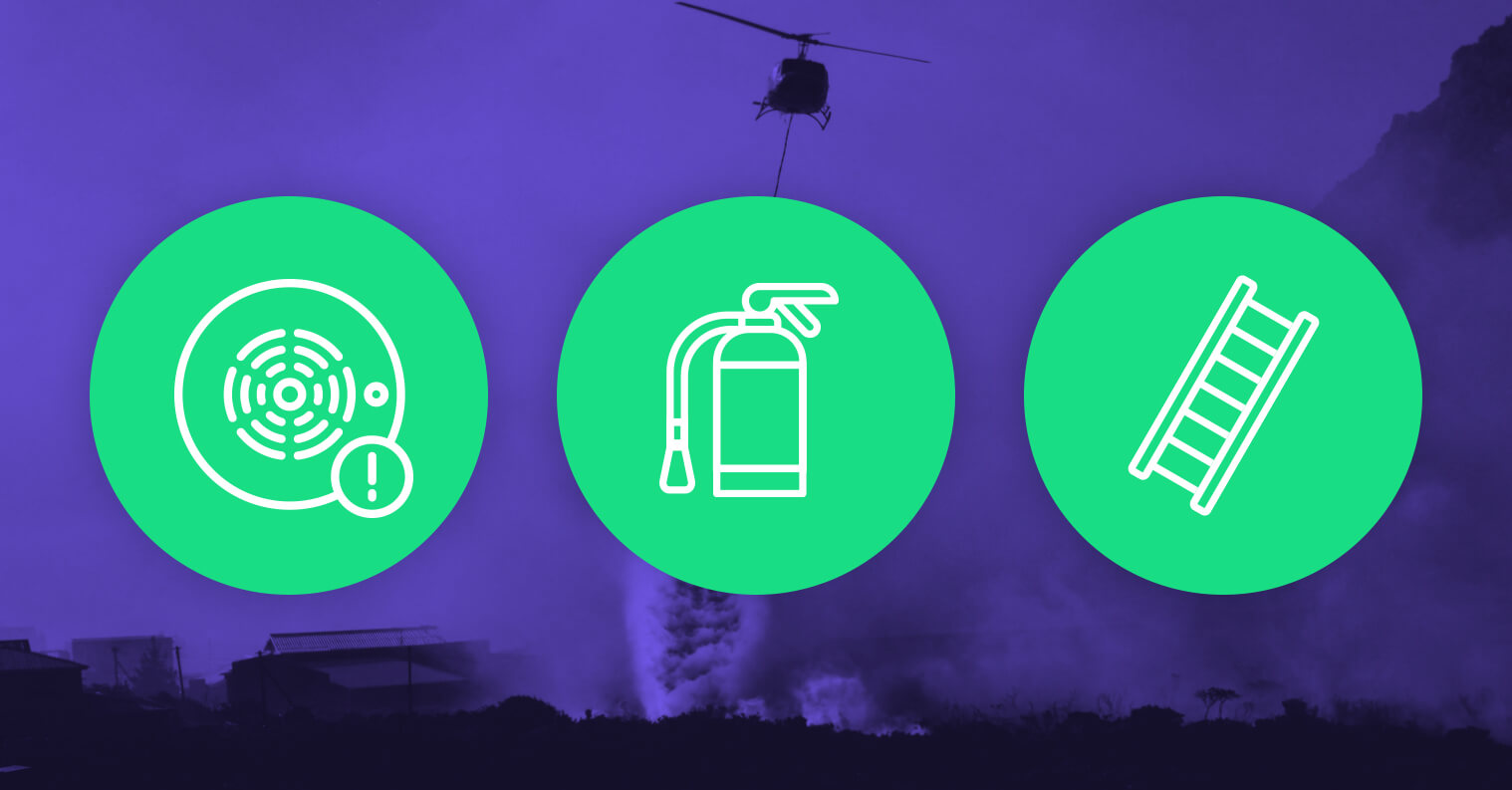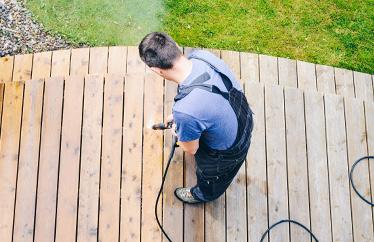Wildfire support and preparedness.
California is the most wildfire-prone state in America. As Property and Casualty Insurers Association of America Spokeswoman Nicole Mahrt-Ganley said, “Fire has been part of California’s landscape for some time and will continue to be.” Yet even after 9,000 wildfires scorched 1.4 million acres, destroyed 11,000 structures, killed 46 people and led to more than $12 billion in insurance claims in 2017, this year is shaping up to be much worse. The state spent one-quarter of its annual firefighting budget and evacuated more than 200,000 homeowners in July alone.
In early July, the blaze started as a wind-fueled fire in Napa and Yolo counties. As I write this, 17 wildfires are blazing across the state – including two of the most destructive in state history. The Carr Fire, which sparked July 23 when a trailer’s tire rim scraped the asphalt, has scorched 214,000 acres and destroyed more than 1,000 residences. That pales in comparison to the Mendocino Complex Fire, also known as the Ranch and River Fires, which has been burning across nearly 360,000 acres for more than two weeks and has officially claimed the title of largest California fire in history.
Why have these fires been so difficult to contain? It’s been especially hot, dry and windy in the Golden State. In addition to flame-hungry drought conditions, construction firms have been building deeper into the forest. One of the worst parts of the disaster is that many affected homeowners are underinsured, meaning they’ll have to pay hundreds or thousands of dollars out of pocket. If you’re a victim of these devastating disasters, read on to discover what’s next.
What to do when returning home after the wildfire has passed
First, stay out of fire-damaged homes until local fire authorities report that it’s safe to enter. There could be structural damage, active electrical currents, lingering embers and other dangers. Plus, soot and standing water left behind could contain toxins. There may also be animals living in your home that weren’t around when you left. Once inside, be aware that furniture, stairs and other home features may be unstable. Proceed with even more caution if your ceiling or floor is sagging.
As soon as you’re back home, it’s time to get to work. The earlier you contact your insurance provider, the better. Report your losses, being as specific as possible about when and where damage occurred. If you can, include photos and video footage. Do not throw anything away until after you’ve made an inventory of the damage. Inquire about policy coverage and filing requirements and record their answers.
You’ll also want to obtain a fire report from your local fire department, fire prevention bureau or fire marshall. This will detail the condition the house was in when first responders arrived as well as an incident number. Last but not least, contact your landlord or mortgage lender so they know what has happened and that you’re taking the right steps.
Your insurer will expect you take reasonable efforts to minimize damage. If it’s dry outside, open windows and doors to ventilate each room. Then, disconnect and check all appliances for damage. If your utilities were turned off, contact the provider before turning them on again. Save receipts from any money you spend securing the property. They’ll come in handy during the claims settlement process.
How to move forward after a fire loss
If you need immediate help with housing, food or medicine, contact your local disaster relief service.
Once immediate needs are addressed, ask your insurance provider and nearby friends about professionals that can help you rebuild. Be sure you understand what your homeowners policy covers in regards to loss of use. Get the names of a few different restoration companies, contractors, engineers and architects. Ideally, you’d find someone that specializes in the work you need, whether that be smoke damage or debris removal.
You have to be very careful to avoid scams. Construction costs do climb after events like this, but price gouging is illegal. Unfortunately, consumers in fire zones may come across so-called “storm chasers” that hope to make money off your tragedy. Resources like the State of California Contractors State License Board (CSLB), California Department of Insurance (CDI) and the Better Business Bureau can be extremely helpful in keeping you safe from “too good to be true” deals.
Even though you may be anxious to return to normalcy, take your time and carefully decide the right course of action. Get a written contract for all work you commission, specifying the work to be done, materials to be used and price for both labor and materials. Check that the name, address, phone number and license number line up with the one on the CSLB database. Read and understand everything before you sign. Keep a copy for your records and monitor the progress of the project with a paper trail. This may sound obvious, but you should never pay in full for a construction project in advance.
If you have any lingering questions about what to do next, shoot us an email at [email protected].
If you have any lingering questions about what to do after a fire loss, sendus an email at [email protected]. Whether you're a customer or not, we're happy to help.CLICK TO TWEET
Whether you’re a customer or not, we’re happy to do what we can. This is our specialty, so we have a lot of helpful information and want to do our part to help Carr and Mendocino fire victims.
What the Mendocino & Carr fires mean for the future
The growing occurrence and severity of California fires may make it harder or more expensive to obtain new or replacement insurance policies down the line. According to Insurance Journal, the number of homeowner complaints about being dropped by their insurance companies more than tripled between 2010 and 2016. A CDI report found that the number of non-renewals in the most at-risk counties increased 15% from 2015 to 2016. Insurers dropped more than 10,000 policies in these places in 2016. And that was before all the damage that occurred 2017 and 2018.
Why are some insurers limiting coverage for wildfire damage or dropping it all together? Ultimately, it’s becoming too risky. An estimated 3.6 million California homes are located in high or very high risk fire zones. This doesn’t even include post-fire risks like landslides, which affected several Napa and Sonoma county homes after the wildfires last fall. To make things easier and less expensive, some providers are increasing their rates statewide. When that isn’t enough, they remove fire damage protections from their policy.
These changes leave many homeowners reliant on surplus line carriers and the nonprofit California Fair Access to Insurance Requirements (FAIR) program, an association of all California home insurance agencies that covers homeowners who cannot qualify for a policy in the traditional market. Though helpful, these last-resort options offer limited coverage for fire and smoke damage only.
In 2003, when California faced a similar fate, state Congress passed several pieces of legislation to protect homeowners. Senate Bills 1855, 2199 and 2962 require increased transparency and flexibility in the policy approval, claims and rebuilding process. There’s also a state law that prohibits an insurer from passing on catastrophic loss to consumers at one time, meaning the rates should rise more steadily in the coming years. Policyholders whose homes were destroyed in these fires will be able to renew coverage for at least one additional year.
State Insurance Commissioner Dave Jones has called for further legislative action, like requiring insurers to cover any homeowner that complies with fire safety laws and takes an active role in mitigating potential damage. He doesn’t have high hopes, though. “There’s no question that insurers are updating their fire risk models in the wake of 2017 fires and they’ll do so again after the 2018 fires,” he told Pacific Standard reporter Jackie Botts last month. He expects insurance companies will only grow more frightened as more homes become classified as at-risk. As a middle ground, he suggests that carriers who remove fire coverage from their standard policy offer an affordable supplement that would compliment the FAIR plan.
Taking action
Looking back on the wild year of California wildfires, one thing is clear: California homeowners have to be prepared. To prevent fires from ravaging your home, consider precautions like keeping electrical wiring up to date, clearing your chimney and removing clutter from your kitchen. Install smoke alarms on every level of your home, get a fire extinguisher, and keep escape ladders near potential escape windows on the second floor. Perhaps most importantly, create an emergency evacuation plan and ensure every family member knows the details. You may have as little as 30 seconds to escape a burning home, so you can’t waste any time figuring out what to do.
Being prepared can minimize loss, but all California residents should also be realistic about the likelihood of fire. That means creating a video inventory of your home, getting digital copies of valuable documents and reviewing your homeowners policy. Pay special attention to whether you have replacement cost, loss of use and adequate dwelling coverage. Consider policies from proactive insurers, like Hippo, that monitor major weather events to reduce claim risk and keep costs low and quote processes quick through digital innovation.
If your home is included in an evacuation zone, heed state and regulator advice. Grab your inventory, important documents and insurance information and get out. Just because your home is in danger doesn’t mean you have to be.




